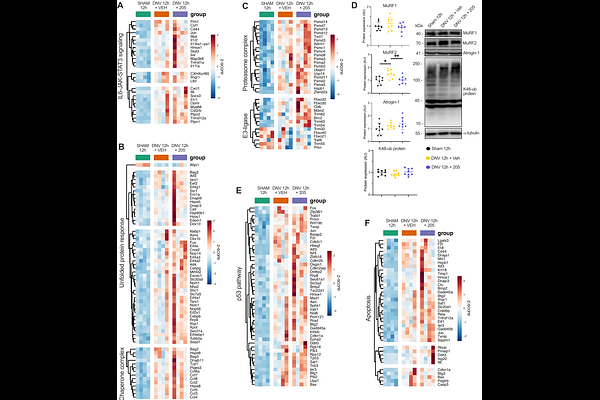Small-molecule inhibition of MuRF1 protects against disuse-induced diaphragmatic dysfunction: Underlying molecular mechanisms

Small-molecule inhibition of MuRF1 protects against disuse-induced diaphragmatic dysfunction: Underlying molecular mechanisms
Ribeiro, F.; Jannig, P. R.; Labeit, S.; Moriscot, A. S.
AbstractBackground: Disuse-induced diaphragmatic dysfunction (DIDD) is characterized by the rapid and progressive loss of diaphragm contractile function and mass in response to inactivity. DIDD compromises respiratory function and enhances morbidity and mortality risks in patients undergoing prolonged mechanical ventilation or phrenic nerve injury. Muscle RING-finger protein-1 (MuRF1) expression is rapidly upregulated under diaphragm mechanical unloading, and is hypothesized to play a role in DIDD pathophysiology. We previously reported that small-molecule inhibition of MuRF1 protects against early DIDD in rats. Herein, we investigated the mechanisms underlying MuRF1 inhibition-mediated protection against DIDD in rats. Methods: Male Wistar rats were subjected to unilateral diaphragm denervation (UDD) for 12 hours to induce DIDD. Immediately after UDD, animals received a placebo (vehicle) or MuRF1 inhibitor (MyoMed-205, 50 mg/kg bw) treatment and were compared with Sham-operated controls. Diaphragm was used for histological, morphometric, transcriptomic (RNA-seq), and protein content (Western Blot) analysis. Results: UDD induced diaphragm slow- and fast-twitch muscle fiber atrophy (~18%, p < 0.05) after 12 hours, which was prevented by MuRF1 inhibition. Mechanistically, UDD perturbed mechanisms involved with myofiber ultrastructure and contractility, mitochondrial function, proteolysis, and tissue remodeling in the diaphragm. Notably, MuRF1 inhibition enhanced mechanisms required for sarcomere integrity, calcium handling, antioxidant defense, chaperone-mediated unfolded protein response, and muscle growth. Moreover, MuRF1 inhibition downregulated intramuscular lipid accumulation and fibrosis responses triggered by prolonged disuse. Conclusion: Small-molecule inhibition of MuRF1 protects against early DIDD in rats undergoing 12 hours of UDD. Mechanistically, this involved augmented control of muscle structure and function, chaperone-mediated unfolded protein, and muscle growth factors, while intramuscular fat accumulation and fibrosis responses associated with DIDD were attenuated.